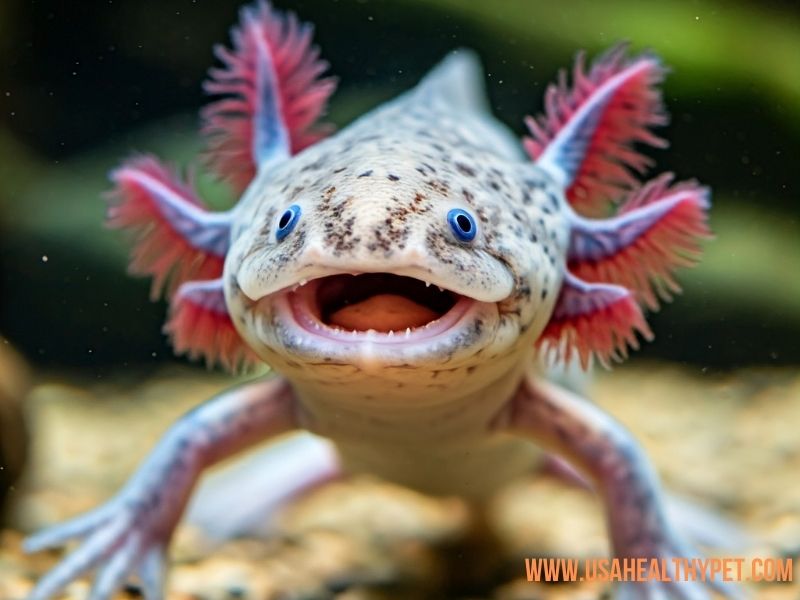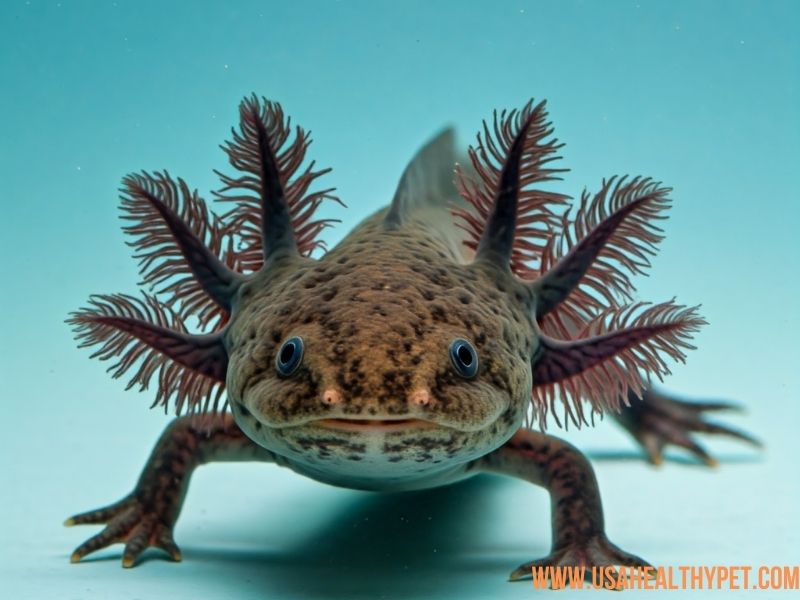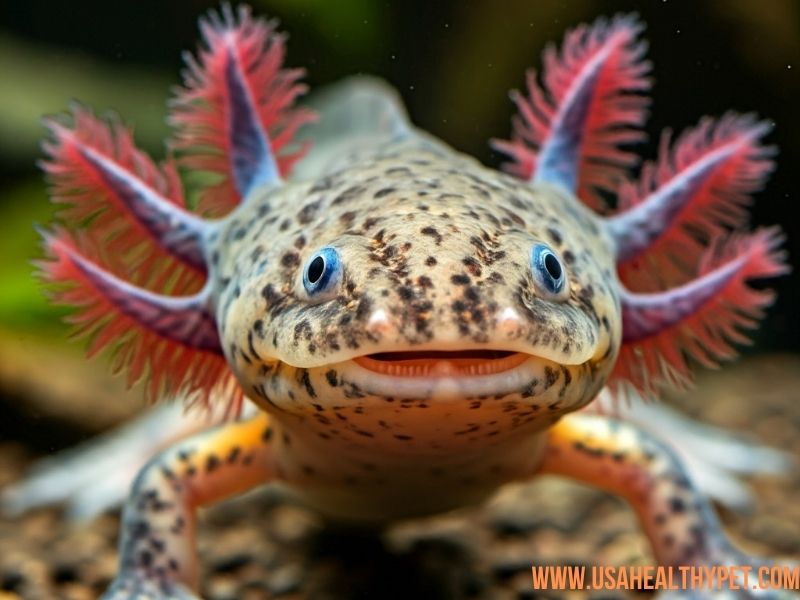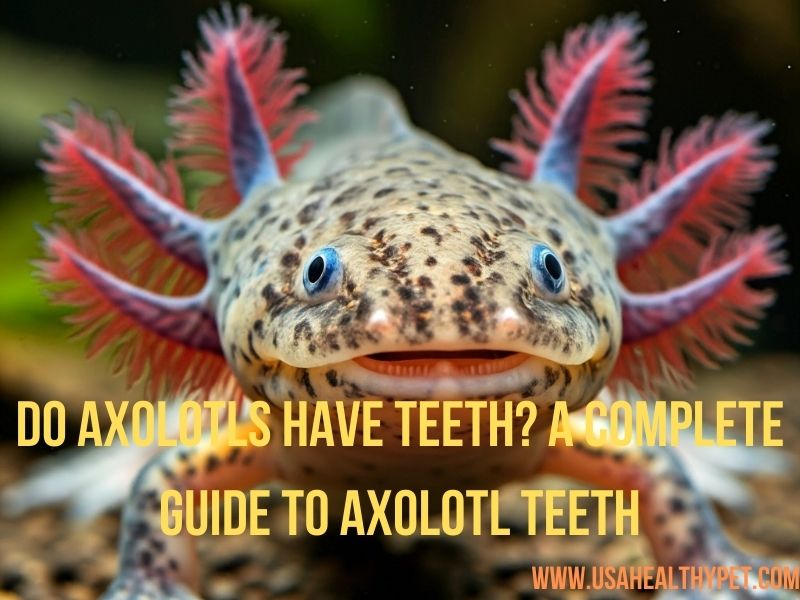If you’ve ever seen an axolotl, you probably noticed their cute little “smile” that makes them look like they’re always happy. But you might be wondering—do axolotls have teeth?
In this article, we’ll explore everything you need to know about axolotls, their teeth, and how these creatures manage to eat. Let’s take a closer look!
What Are Axolotls?
Before we get into the whole teeth situation, let’s first talk about what axolotls are. Axolotls are a type of salamander, but they’re unique because they stay in their aquatic larval stage throughout their entire lives.
This means they keep their gills and live underwater, unlike most salamanders, which move onto land as adults. Axolotls are native to Mexico and are often called “Mexican walking fish,” even though they aren’t fish at all!
These little creatures have gained popularity because of their distinct appearance, fascinating biology, and, of course, their permanent smile.
Do Axolotls Have Teeth?
Yes, axolotls do have teeth! But Axolotl teeth are much different from what we might picture when we think of animal teeth.
Their teeth are tiny and barely visible to the naked eye. They’re more like little nubs that help axolotls grab onto their food rather than tear it apart.
So, while they technically have teeth, they’re not the type that will make you think twice about your fingers when feeding them.

How Do Axolotl Teeth Work?
Axolotls’ teeth are designed more for gripping rather than chewing. Think of them like a pair of soft tweezers. When an axolotl catches its prey, it uses its small teeth to hold onto the food, then it swallows it whole.
They don’t need sharp teeth to rip or shred their meals like some other animals do.
This makes sense because axolotls typically eat soft-bodied prey like worms, small fish, and other tiny aquatic critters. Their teeth are just enough to help them handle their food, but they don’t do much actual “biting.”
Dr. Richard Griffiths, mentions that “axolotls have teeth that are not developed for tearing or cutting. Their teeth are more like little bumps that help them catch and hold onto their prey before swallowing it whole.”
What Do Axolotls Eat?
Axolotls aren’t picky eaters. In the wild, they snack on insects, small fish, and other tiny creatures that live in the water.
When kept as pets, they often eat bloodworms, earthworms, or even specially-made axolotl pellets.
Because they swallow their food whole, they don’t need big, sharp teeth to help them chew their meals. Their digestive system is well-suited to breaking down the food once it’s inside their stomachs.
Can Axolotls Bite?
Now, you might be wondering, “Can axolotls bite me?” The short answer is yes, they can technically bite, but it’s nothing to worry about.
Axolotls don’t bite out of aggression; they’re usually just trying to grab their food. If your fingers get in the way during feeding, they might mistake them for food.
However, since their teeth are so small and gentle, a bite from an axolotl feels more like a little poke rather than anything painful. It’s kind of like when a baby bird nibbles at your hand.
Dr. Karen Petrosky, a veterinarian assures that “axolotl bites are nothing to worry about for pet owners.” She explains, “Their bites are accidental most of the time and harmless.

Are Axolotl Bites Dangerous?
Not at all! Axolotl bites aren’t dangerous to humans. Their teeth are tiny and soft, so even if they accidentally bite your finger while you’re feeding them, you won’t feel much, if anything at all.
There’s no venom or harmful bacteria to worry about from an axolotl bite.
Of course, it’s still a good idea to wash your hands after handling your axolotl or feeding them, just to keep things clean and hygienic.
How to Feed Your Axolotl Safely
To avoid any accidental nibbles, it’s a good idea to use feeding tongs when giving your axolotl food. These long, thin tools let you drop food directly into the water near your axolotl’s mouth, without your fingers getting too close.
Axolotls have a great sense of smell, and they usually snap up food quickly once they detect it. So, feeding them with tongs protects your fingers and makes it easier to guide the food to them.
Differences Between Axolotl Teeth and Other Animals
Axolotls’ teeth are quite different from most animals. Unlike mammals, which use their teeth to chew and break down food, axolotls only need their teeth to grip their prey. They swallow their meals whole, so they don’t need to chew.
According to a 2013 study published in Zoology, axolotls’ feeding habits are quite different from most other animals. They rely heavily on suction feeding, where they create a vacuum with their mouth to suck in food along with water. Their tiny teeth simply help them grip the food as they swallow it.
If you compared an axolotl’s teeth to those of a dog or cat, the difference would be clear. Their teeth are more about function than form—they serve a very specific purpose, and that’s it!
Can Axolotls Regrow Teeth?
Interestingly, axolotls are known for their amazing regenerative abilities. They can regrow limbs, spinal cord tissue, and even parts of their heart! So, can they regrow their teeth?
The short answer is yes, axolotls can regrow teeth if they lose them. This ability is part of their overall regenerative superpowers. It’s another reason why these creatures are so fascinating to scientists!

Do Baby Axolotls Have Teeth?
Yes, even baby axolotls (called larvae) have teeth! Just like adults, their teeth are small and not very visible.
They use them to catch tiny food particles as they grow. As axolotls develop, their teeth grow along with them, but they never become the sharp, menacing kind of teeth we see in other animals.
Axolotl Care Tips
Taking care of an axolotl is relatively simple, but it’s important to understand their unique needs. Here are a few quick tips:
- Water Quality: Axolotls need clean, cool water to thrive. Regular water changes and proper filtration are key.
- Feeding: Offer a variety of foods like worms, pellets, and frozen foods to keep them healthy and happy.
- Tank Setup: Axolotls like a calm, quiet environment. Avoid bright lights and rough tank decorations that could hurt their delicate skin.
- Handling: Try not to handle your axolotl too much. They have sensitive skin that can be easily damaged.
Fun Facts About Axolotls
- Axolotls are often studied for their amazing ability to regenerate body parts.
- They come in a variety of colors, including wild (dark), leucistic (white with pink gills), and golden.
- Axolotls can live up to 15 years in captivity if properly cared for!
Axolotls in Popular Culture
Axolotls have become popular in recent years, thanks to their quirky appearance and unique biology.
They’ve appeared in video games like Minecraft and Pokémon, and are often featured in memes and social media posts. Their adorable “smiles” have won them fans all over the world.
Conclusion
So, do axolotls have teeth? Yes, but they’re not the kind of teeth you need to worry about. These little creatures use their teeth to help them eat, but their bites are harmless to humans.
With their fascinating regenerative abilities and unique looks, axolotls continue to charm and intrigue people all over the world. If you’re thinking about getting an axolotl as a pet, you’re in for a fun and rewarding experience!
FAQs
1. Can axolotls bite your finger off?
No, axolotls have tiny teeth that are too small and gentle to cause any harm.
2. Do axolotls chew their food?
No, they swallow their food whole. Their teeth are mainly for gripping, not chewing.
3. Are axolotls dangerous to humans?
Not at all! They are harmless creatures and pose no danger to humans.
4. How often do axolotls lose their teeth?
Axolotls can lose teeth, but they can regrow them as part of their regenerative abilities.
5. What should I feed my axolotl?
You can feed your axolotl worms, small fish, or specially formulated pellets designed for them.
